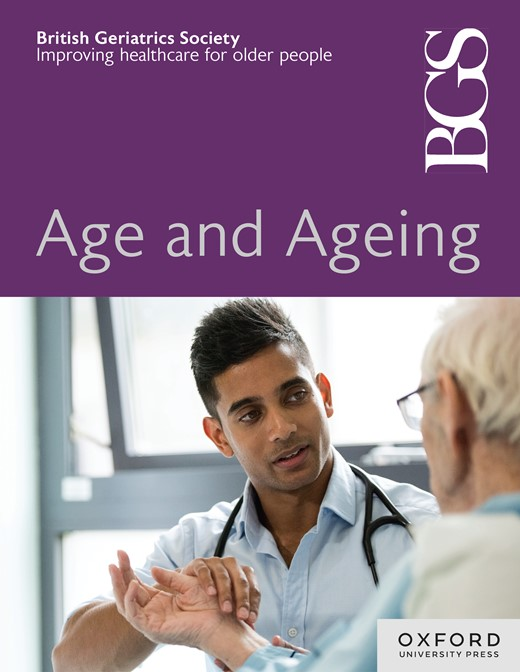五个欧洲国家居住在社区的老年人孤独与虚弱之间的关系:纵向研究
IF 6
2区 医学
Q1 GERIATRICS & GERONTOLOGY
引用次数: 0
摘要
背景 孤独被描述为个人和社会需求得不到满足的主观体验,涉及情感和社会领域。虚弱是一种易受压力影响的状态,通常表现为身体、心理和/或社交方面的损伤。目的 本研究旨在探讨孤独与虚弱之间在不同领域的双向联系。方法 研究对象包括来自欧洲城市健康中心项目的 1735 名老年人。孤独感采用六项目 De Jong Gierveld 孤独感量表进行评估。年老体弱采用蒂尔堡年老体弱指标进行评估。采用多变量线性回归和交叉滞后面板模型来探讨社交孤独和情感孤独维度与总体、身体、心理和社会脆弱性之间的关联。结果 总体孤独感与总体虚弱之间存在双向联系(孤独感与虚弱:β = 0.09,95% CI:0.03,0.15;虚弱与孤独感:β = 0.05,95% CI:0.004,0.10)。基线时总体孤独程度较高与随访时心理虚弱程度较高相关(β = 0.05,95% CI:0.00,0.10)。反向关联并不显著。总体孤独感与社交脆弱之间存在双向关联(孤独感导致社交脆弱:β = 0.05,95% CI:0.01,0.10;社交脆弱导致孤独感:β = 0.05,95% CI:0.00,0.09)。结论 本研究证实了解决老年人孤独问题的重要性。增加社会支持、锻炼参与和促进健康行为的干预措施可有效降低老年人体弱的风险,同时预防孤独。本文章由计算机程序翻译,如有差异,请以英文原文为准。
The association between loneliness and frailty among community-dwelling older adults in five European countries: a longitudinal study
Background Loneliness is described as the subjective experience of unfulfilled personal and social needs, with emotional and social domains. Frailty is a state of vulnerability to stressors, which is often characterised by impairment in the physical, psychological and/or social domain. Objective This study aims to examine the bidirectional association between loneliness and frailty across the different domains. Methods The study included 1735 older adults from the Urban Health Centres Europe project. Loneliness was assessed using the six-item De Jong Gierveld Loneliness Scale. Frailty was assessed by the Tilburg Frailty Indicator. Multivariate linear regression and cross-lagged panel models were used to explore the associations between the social and emotional loneliness dimensions and overall, physical, psychological and social frailty. Results A bidirectional association existed between overall loneliness and overall frailty (loneliness to frailty: β = 0.09, 95% CI: 0.03, 0.15; frailty to loneliness: β = 0.05, 95% CI: 0.004, 0.10). Higher levels of overall loneliness at baseline were associated with higher levels of psychological frailty at follow-up (β = 0.05, 95% CI: 0.00, 0.10). The reverse association was not significant. A bidirectional association existed between overall loneliness and social frailty (loneliness to social frailty: β = 0.05, 95% CI: 0.01, 0.10; social frailty to loneliness: β = 0.05, 95% CI: 0.00, 0.09). Conclusion This study confirms the importance of addressing loneliness among older adults. Interventions that increase social support, exercise engagement and promote healthy behaviours may be effective in reducing the risk of frailty among older adults and simultaneously preventing loneliness.
求助全文
通过发布文献求助,成功后即可免费获取论文全文。
去求助
来源期刊

Age and ageing
医学-老年医学
CiteScore
9.20
自引率
6.00%
发文量
796
审稿时长
4-8 weeks
期刊介绍:
Age and Ageing is an international journal publishing refereed original articles and commissioned reviews on geriatric medicine and gerontology. Its range includes research on ageing and clinical, epidemiological, and psychological aspects of later life.
 求助内容:
求助内容: 应助结果提醒方式:
应助结果提醒方式:


